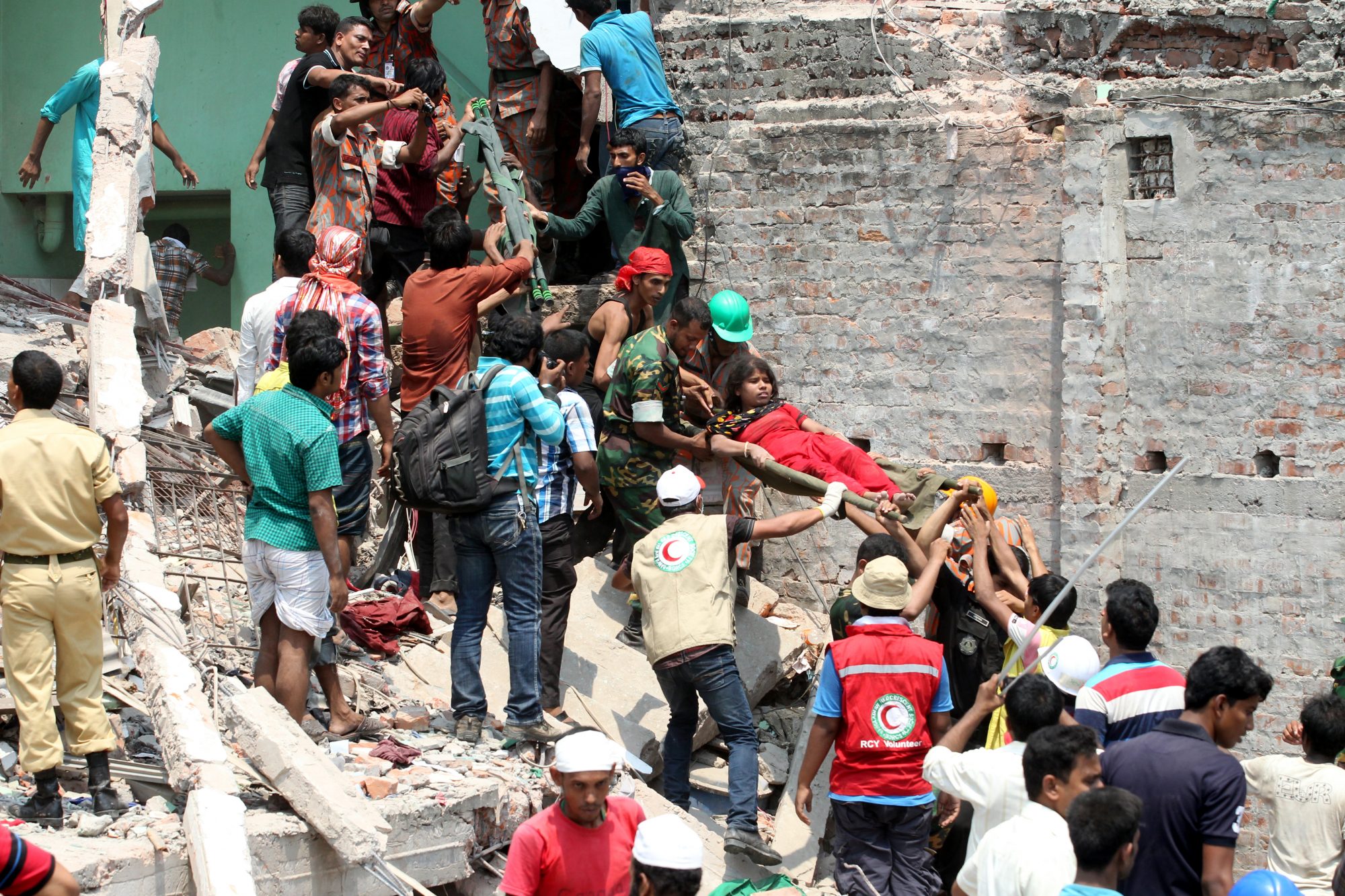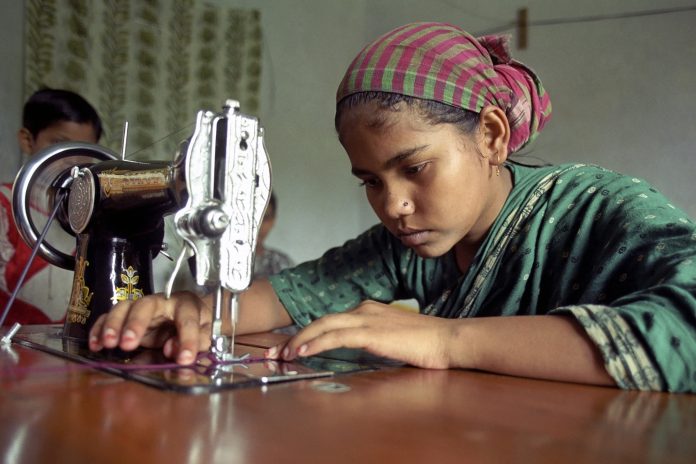Dr Nika Salvetti, Nyenrode Business University, explains how Bangladeshi garment workers can be helped by brands
Social and environmental responsible behaviour in the ready-made garment (RMG) industry can only improve if you take into account the history, the complex institutional environment characterised by local culture and sets of rules and regulations, and the mindsets of local business leaders.
Besides international pressure, there is an important role for local business leaders to promote more responsible and sustainable behaviours along the supply chain.
While more and more companies are focused on sustainable entrepreneurship and focus on fair and inclusive economic growth of the global economy, there is still a huge trend of companies moving their production to new markets with lower production costs.
The largest, not necessarily the most sustainable, economic growth can be seen in Southeast Asia. The pressure on raw materials and essential natural resources is therefore high and the burden on society is increasing.
The RMG situation in Bangladesh
This has been particularly true in the Bangladesh RMG industry since such pressure provoked the fatal accidents at Tazreen Fashions and Rana Plaza in 2012 and 2013 which almost killed 2,000 innocent workers. As a consequence of these fatal disasters, the societal criticism was overwhelming and resulted in the concentrated, international pressure via several stakeholders to improve. This pressure was focused on socially and environmentally responsible behaviour along global supply chains, from upstream to downstream of the chain.
However, the focus has been directed at blaming the local suppliers in Bangladesh.
In fact, at the supplier level, unsustainable practices were soon highlighted, especially in relation to safety of buildings, inadequate working conditions, and lack of attention on environment impacts. According to research findings, this has been nurtured by the local culture of ‘quick and easy’ gains supported by the buyers’ requirements of squeezing the price of garment units at the lowest level possible to guarantee higher profit margins. But also by the weak and low enforcement that would not ensure compliance to laws and local regulations.

Consequently, suppliers tend to compete against each other to guarantee the target prices, often accepting to take orders at prices below their costs because of the urgency to satisfy their huge production capacity. That has been creating an asymmetric power relationship between buyers and suppliers, in favour of the buyers. As buyers are in a better power negotiation position, they tend to flex the muscles and take advantages in commercial terms. For instance, shifting consignments originally on FOB by sea to C&F by air to avoid paying for the freight costs.
These double standards and decoupling approaches, had been creating mistrust between suppliers and buyers and undermined the opportunity of strengthening collaboration and cooperation in the name of sustainability.
Change on the ground for Bangladeshi garment workers?
Nevertheless, few local leaders in the RMG industry in Bangladesh have been realising that pursuing low labour costs and not respecting the environment will not build a sustainable business. The local producers also see this and understand that now more than before, compliance and sustainability determine competitive advantages and the advancement of CSR. Our research shows that it is important to listen to the local voices and to look at the local context, in particular of those local business leaders who are striving to contribute to the improvement of the sector by, for example, implementing technological change, improving working conditions beyond what is established by the local law, redefining the power relationships with their buyers and by setting the examples for others to follow.
We tend to look from our Western perspective and often forget to understand the local context, which is the key to creating genuine improvement.
COVID-19 as a new reason to change the industry
With COVID-19, the garment sector is once again put under stress and criticism. This time the blame is towards the buyers as they have been neglecting to respect their commitments. In fact, most of them have been cancelling orders and postponing payments, imposing unfair commercial terms, such as air frights or imposition of discounts on garment unit price.
According to the President of BGMEA, from March to May 2020, the back to back letters of Credit liability and deferred payment amount to almost $ 5 billion. That forced 348 of BGMEA’s 2,274 members to shut their factories; out of the rest 1,855 paid the workers for the month of May. But others could not afford to pay neither in the month of April.
This has caused the loss of jobs for more than 1 million workers who are now forced to survive the extreme difficult living conditions imposed by COVID-19.
Monirul Alam Shuvo, a spokesman for the BGMEA, said 1,370 factories could apply for loans from the government’s COVID-19 bailout package to pay the workers. But many of them were considered ineligible for the funds.
In addition, some factories had to close down for lack of orders and some more had to close down partially, again for lack of orders. Whoever is closing down fully or partially will have to observe the provisions as per law. The Government of Bangladesh gave soft loan support for payment of salaries for the month of April, May, and June.
Factories cannot support workers without having orders from their buyers, also they are already under distress from cancellations, discounts, and many other costs that are continuing with less or no revenue.
Collaborative efforts should be leading the way to recovery and building a sustainable and ethical fashion industry, as the costs for inaction or dismissing shared responsibility might be worse than simply keeping and respecting purchasing commitments.
Listening to the voice of the local business leaders, the buyers should first of all, respect their commitment for all orders that have been produced and for the initial investment costs of raw materials and human resources; then seizing opportunity to build a more sustainable and resilient supply chain.
What can brands do to change the lives of Bangladeshi garment workers?
1. Develop “Online Market Place” with locals
Build up on the consumers’ sentiments and preferences on e-commerce and build warehousing facilities in the main markets’ hubs. Domestically, make use of the existent stocked amount of garment products;
BGMEA has already proposed this solution to the Government of Bangladesh in order to help the local suppliers to develop an “Online Market Place”. This would initially put on sale the cancelled orders and then gradually create a local own “Brand”. As a long term solution to the problem, BGMEA also proposed to the government that the industry would share a percentage of the margin of the “online market place” directly with the workers to showcase a “fair” attitude to all.
Thanks to the power behind the #PayUp movement on social media platforms like Instagram, the consumer sentiment is already there.
The challenge is to build, organise and popularise the “online market place” in this short span of time, before the merchandise and the fabrics becomes irrelevant in terms of styling, colour and material. Also, it is challenging to organise the stock and launch them as collections. Since there were several random cancellations, the visual story of a collection is disturbed.
2. Supply chain transparency
Make the supply chain more transparent and efficient by investing in digitalised systems to better monitor the seasonal variation in production and track and trace practices along the supply chain.
Brands have made several efforts to trace their supply chain but they are doing that primarily to control their production and quality and also to protect their Brands from negative campaign. Extranet has been used for traceability, to protect them for bad branding, legal complications etc.
To take advantage of this traceability consumers has to be made aware about who has made their products and what percentage of the retail price they (consumers) are paying actually goes to the producer of the product and to the Bangladeshi garment workers making them.
So far, major corporations are not divulging this kind of information to their consumers.
The barcode on the products currently contains the selling price and where the product is produced but the procurement price and the vendor/manufacturer information are strictly for use of the brand, not for public domain or public knowledge.
3. Credit facilities for timely and full payment to workers
Enable credit facilities for the suppliers to allow timely and full payment to the workers.
Nowadays, most buyers/ Brand buy on account, meaning at 69, 90, or 120 days credit and they normally don’t even open a Letter of Credit beforehand, rather they issue Point of Sales (POs) and documents are sent in collection and upon acceptance, suppliers get paid on the maturity date. Many suppliers often sell these documents before maturity date at a discount, so this kind of credit is already existing. In most cases suppliers arrange for these credits on their own and at times, buyers have arrangements with major international banks for discounting their bills.
Therefore, in a way credit facility is already existing.
However, during the COVID-19 crisis most of the buyers did not take the goods made on good faith or even were Letter of Credit was given, and asked suppliers to hold keeping the merchandise unsold. Suppliers have no choice but to comply to buyers’ instructions. Nothing is binding on them unless the goods are shipped and bank to bank acceptance is received.
5. Establish fund for those affected by COVID-19
The challenge is that suppliers are already drained out in most cases. Most of the time, buyers are also the retailers. They are then represented as one solid group, unbalancing the power of negotiation in terms of who should contribute to what. Next to this, the brands would look at this proposal as another ‘CSR Activity’ and they will probably propose that “we are already doing many CSR, this is not our responsibility”. However, Bangladeshi garment workers are everyone’s responsibility.
6. Stronger collaboration with key suppliers
Strengthen the collaboration with key suppliers in order to improve purchasing practices so that it would reinforce an entire supplier ecosystem for greater resilience in the future;

So far brands are establishing ‘preferential’ collaboration for their own interest by guiding suppliers to do a lot of things to protect their Brand, to have a dependable supply chain, to get their target prices. They won’t do a collaboration to ensure “Fair Price”. Thus the question is the ‘how’ and ‘what’ in terms of collaboration to ensure that all main stakeholders, buyers, suppliers and workers, can take advantages to build a stronger and more sustainable and responsible supply chain.
7. New type of costing
Elaborating a new type of costing to internalise the externalities produced along the supply chain.
The price that buyers pay to the suppliers is already embedded in the barcode, but not visible by the consumers. This means that consumers cannot see the facts of how Bangladeshi garment workers are impacted. Many buyers insist on “open costing” where they want to know every component of the suppliers’ cost, not to give them (suppliers) a fair price but to make the competing suppliers to compete against each other. Every efficiency improved by suppliers in terms of labour, material usage or overhead reduction has been passed on to buyers through reduced price over the past decades. Thus reducing the negotiation power unbalance in favour of the buyers and applying a much more transparent way of accounting from both sides, might help reaching a fairer price.
COVID-19 has put once again the garment sector of Bangladesh under stress. Recovering from it by co-responsibly addressing the commitments to society and the environment, by keeping alive and healthy the human power of the sector, will inevitably strengthen the resilience of the sector and recuperate its winning position as soon as the crisis is over.











